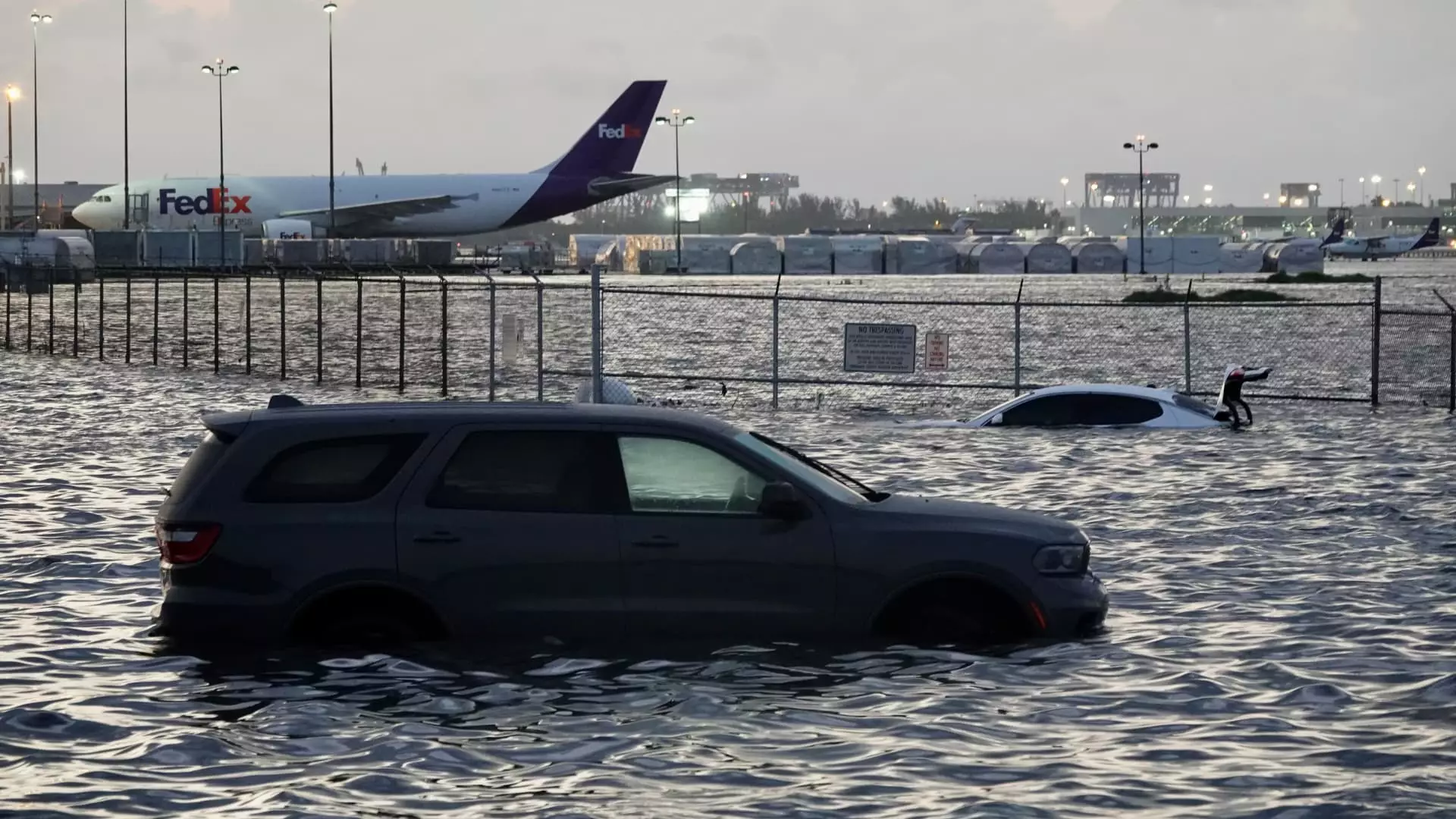In recent years, the dire state of American infrastructure has shifted from a concern to an impending crisis. Despite ongoing debates and sporadic investments, the foundational systems that keep the nation functioning are teetering on the brink, and the lethal combination of aging assets and climate change is accelerating this decay. A comprehensive look reveals that the nation is not merely struggling but dangerously close to widespread failure that threatens economic stability, national security, and public safety.
Central to this crisis is the glaring inability of U.S. infrastructure to withstand the increasingly extreme weather events brought on by climate change. Flooding is no longer a rare occurrence but a new normal, with incidents like the 2023 flooding at Fort Lauderdale International Airport demonstrating how vulnerable our critical transportation hubs are. Such catastrophic events are not isolated; they are symptomatic of a broader systemic failure to adapt infrastructure designs to the evolving climate realities. Bridges in New York, similarly exposed, have temporarily malfunctioned—stuck open due to thermal expansion—highlighting how even infrastructure expected to withstand wear and tear is now susceptible to nature’s fury. These failures underscore one inconvenient truth: much of our infrastructure was conceived in a different era, optimized for a climate that no longer exists.
A System Under Siege: Weak Grades, Rising Risks
The American Society of Civil Engineers (ASCE) offers a stark assessment with its recent “C” grade—an indication that America’s infrastructure is only marginally acceptable. Yet beneath this superficial score lies a troubling reality: every component, from airports to power grids and telecommunications networks, faces mounting threats from climate-induced phenomena like floods, wildfires, and unprecedented heatwaves. Modeling data from First Street reveals that nearly one-fifth of America’s power infrastructure and close to one-sixth of telecommunications systems are at significant risk from environmental hazards. Airports, often seen as gateways to economic activity, are particularly vulnerable, with some 12% under immediate threat from floods or wildfires.
The critical question is whether anything meaningful is being done to reverse these trends. The truth is that most of the existing infrastructure is an inherited legacy—built decades ago when climate change was not part of the design considerations. This mismatch leaves the system dangerously unprepared, exposing vulnerabilities with each passing extreme weather event. With climate scientists warning of a near-inevitable increase in severity and frequency of disasters, the nation is risking a future where infrastructure failures become commonplace rather than exceptions.
Financial Dissonance: Who Wins, Who Loses?
The economic implications of this infrastructure crisis are staggering. According to the ASCE, closing the current spending gap of $3.7 trillion in the next decade is not just a matter of funding but of political will and strategic prioritization. Yet, attempts at improving resilience are hindered by political maneuvers and budget cuts. The Trump administration’s retreat from climate science funding, exemplified by the disbanding and downsizing of agencies like NOAA, FEMA, and the NIST, exemplifies governmental unwillingness to face the reality head-on. Such cuts threaten to create a knowledge vacuum, hampering efforts to design infrastructure that can withstand climate shocks.
From an investor perspective, this landscape is fraught with uncertainty. Climate risk analysts like Sarah Kapnick are increasingly concerned about how to allocate capital in a world where climate-related vulnerabilities undermine traditional investment justifications. Insurance providers are questioning coverage models, switching to more expensive policies or retreating altogether from highly vulnerable sectors. The disconnect between urgent needs and available funding creates a perfect storm where short-term political gains are prioritized at the expense of long-term resilience.
A Future Defined by Preventable Failures
The core of this crisis centers around the failure to integrate science into policy and infrastructure planning. Despite endorsements from experts like Tom Smith, who emphasize the importance of science-based design, this guidance is repeatedly ignored or underfunded. The consequence is clear: our infrastructure continues to age without proper adaptation, creating a cycle where disaster costs escalate every year, draining government resources and increasing economic uncertainty.
In the center-right liberal perspective, the solution is one of pragmatic reform: investment in resilience should not be viewed as an expense but as a necessary safeguard for economic stability. Strategic public-private partnerships, sensible regulation, and a focus on innovation can reorient infrastructure development toward durability and flexibility. It’s about recognizing that climate change is a threat that cannot be deferred indefinitely and that resilient infrastructure is a form of fiscal discipline. Only through sustained, targeted investment—resisting the shortsighted political temptations to cut—can the nation hope to stave off an infrastructure collapse that, if left unchecked, could very well define the next decade’s legacy.

